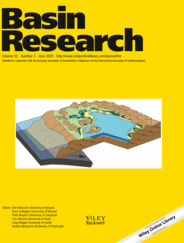
Full text loading...
 , Jeffrey A. Nitterour1
, Jeffrey A. Nitterour1
The hydrodynamics of rivers approaching a receiving basin are influenced by the onset of backwater conditions that give rise to decelerating reach‐average flow velocity and decreasing boundary shear stress. These changes occur across a spatial gradient over which decreasing sediment transport capacity triggers morphodynamic responses that include sediment deposition at the transition from uniform to nonuniform flow. As a consequence, the channel width‐to‐depth ratio and bed sediment grain size decrease downstream. While nonuniform flow and associated morphodynamic adjustments have been investigated in modern fluvial–deltaic systems, the impacts to fluvial–deltaic stratigraphy remain relatively unexplored. This represents an important unresolved gap: there are few contributions that link morphodynamic response to nonuniform flow, impacts on sediment deposition and influence on the rock record. This study uses a numerical model to explore how variable channel hydraulics influence long‐term (1000s years) patterns of sediment deposition and development of stratigraphy. The model results indicate that: (a) nonuniform flow propagates upstream beyond the backwater transition that is traditionally estimated with a basic backwater length scale relationship. (b) Base‐level fluctuations, especially rising, enhance the impact of nonuniform flow. (c) Sediment deposition shows large spatio‐temporal variability, which ultimately contributes to unique stacking patterns of fluvial–deltaic stratigraphy. (d) Nonuniform flow imparts spatial variation in flow depth, channel bed slope and sediment grain size over the delta, and these signatures are potentially preserved and recognizable in the rock record.

Article metrics loading...

Full text loading...
References


Data & Media loading...

